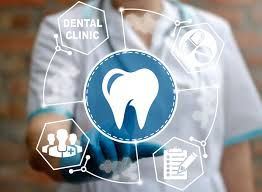Revolutionizing Orthodontics: How AI Technology is Transforming Patient Experience (Orthodontic AI Marketing)
- D G
- Nov 29, 2024
- 4 min read
Updated: Sep 5
In a world that is increasingly driven by technology, orthodontics is undergoing a remarkable transformation. One standout innovation is artificial intelligence (AI). By weaving AI into daily practice, orthodontists can streamline operations while significantly improving the patient experience. In this blog post, we will explore how AI is changing patient interactions in orthodontics, leading to greater satisfaction and better outcomes.
Enhancing Communication with Orthodontic AI Marketing
Effective communication is key to a positive patient experience. Traditional interactions, like phone calls or in-person visits, can be lengthy and sometimes leave patients with unanswered questions. Enter AI-powered chatbots and virtual assistants, which are proving to be game changers in Orthodontic AI Marketing.
These tools offer instant responses to patient queries, schedule appointments, and send reminders about upcoming visits or care instructions. For instance, AI chatbots can handle up to 80% of routine inquiries, allowing staff to focus on more complex cases. This swift communication makes patients feel valued and ensures they get the information they need when they need it.
Additionally, AI can analyze past patient interactions to identify common questions or concerns. Armed with this data, practices can create informative resources tackling these issues head-on. As a result, patients enjoy a more personalized experience and build stronger connections with their orthodontists.

Streamlining Treatment Planning
AI technology excels in analyzing complex data sets quickly and accurately. In orthodontics, this capability translates to highly effective treatment plans tailored for each patient.
Consider how AI can process 3D scans, X-rays, and detailed patient histories in a fraction of the time it would take a human. With AI, orthodontists can present personalized treatment options within minutes instead of hours. For example, AI can reduce treatment planning duration by as much as 30%, allowing for quicker decisions.
Moreover, AI can simulate how teeth will move during treatment, giving patients a clear understanding of what to expect. This aspect nurtures trust and encourages adherence to the suggested treatment plans, which ultimately leads to better results.
Increasing Accessibility and Convenience
AI technology plays a vital role in enhancing accessibility in orthodontics. With the rise of tele orthodontics, practices can offer virtual consultations powered by AI to connect with a wider patient base. This approach facilitates remote assessments and care recommendations, making orthodontics more available than ever.
For example, patients can submit photos of their smiles, and AI can evaluate the severity of their orthodontic needs. These assessments prepare orthodontists to lead focused discussions during virtual visits. This is especially beneficial for patients with mobility issues or those living in rural areas, as it widens access to care and boosts overall satisfaction.
Enhancing Treatment Monitoring
Monitoring treatment progress is critical for achieving successful outcomes in orthodontics. AI technology can significantly aid in remotely overseeing patients throughout their treatment journey.
For instance, smart tracking devices can monitor aligner wear and changes in braces without needing frequent office visits. Using a simple app, patients can send their progress information to their orthodontists. Studies show that real-time tracking leads to a 20% increase in treatment compliance, as orthodontists can catch any deviations quickly.
Patients like being active participants in their treatment. AI tools enable them to track their advancements easily, which fosters higher satisfaction rates and commitment to compliance.
Making Education Interactive
Patient education is another area where AI shines. Traditional methods, such as brochures and lectures, often overwhelm patients. By leveraging AI, orthodontic practices can create interactive and engaging educational experiences.
For example, virtual reality tools can allow patients to visualize their expected treatment outcomes in real-time. A recent survey indicated that patients find interactive sessions 45% more effective than typical presentations. This hands-on experience not only makes information clearer but also generates excitement about their treatment plans.
Additionally, AI can provide personalized educational content tailored to different treatments and preferences. The more relevant the information, the better patients grasp what to expect throughout their journey.
Personalized Follow-Up Care
Follow-up care is crucial in orthodontics, and AI streamlines this process by personalizing it for each patient. By analyzing patient data, AI can help develop follow-up schedules catered to individual needs.
For instance, certain patients may need frequent check-ins due to compliance challenges. AI can automate reminders and send personalized motivational messages tailored to keep patients on track. This proactive engagement demonstrates commitment to patient success, enhancing their experience and boosting treatment effectiveness.
Looking Ahead: The Future of Orthodontics
Integrating AI technology in orthodontics sets the stage for a remarkable transformation in patient care. From enhancing communication to making education interactive and personalizing follow-ups, AI is not just a means of improving efficiency. It is a vital driver for better patient engagement and satisfaction.
As orthodontic practices continue to adopt these innovations, patients will experience a more seamless and informative journey. For orthodontists, leveraging AI could also be essential in reaching a broader audience. This approach not only improves patient outcomes but also elevates the quality of service provided.
The future of orthodontics looks bright with continuous technological advancements. Embracing AI is not just an opportunity; it is a crucial step towards transforming patient experiences in this field.





Comments